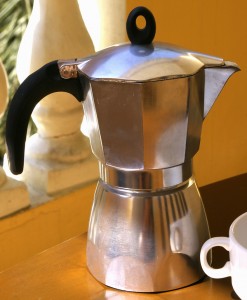One of the problems when you play around the kitchen, is keeping your pots and pans sparkling clean. I try to follow three simple rules.
First, don’t go too hot on the burner. This burns oil turning it into stubborn gunk that sticks to the pan. It also vaporizes some of the oil stinking up the air and your clothes. Worse, with time it gunks up your range, range hood, kitchen, lungs even.
Second, don’t spill. The spill gets burned into the sides of your pot and onto the burner. If you spill, you’re using the wrong pot size or you’re cooking way too much. Or you’re just plain sloppy.
Third, clean. If you somehow screw up the two simple practices above, I guarantee you will have a tough time cleaning up. And you will need abrasives. To avoid scratching up your pots and pans too much, use the mildest abrasive pads if possible. This will require a lot of elbow grease.
In the tougher cases, you will have to use harsher abrasive pads. In that case, once the pot is gunk free, you will need to polish your way down to the milder abrasive pads to lighten the scratches and, finally, top off with a metal polish if you really want to be shiny.
Clean up is a lot of work, and in this case, as with most, an ounce of prevention is worth and pound of cure.

